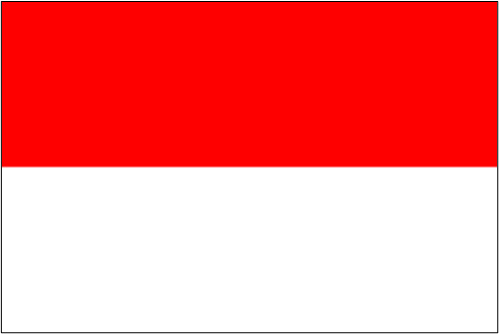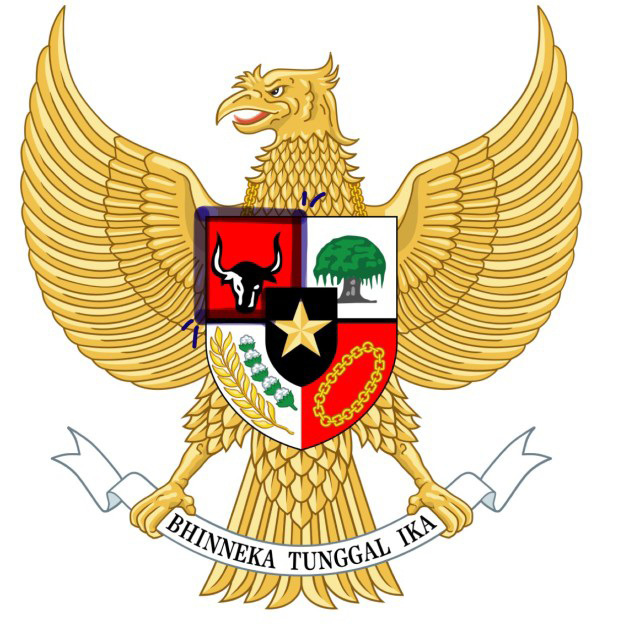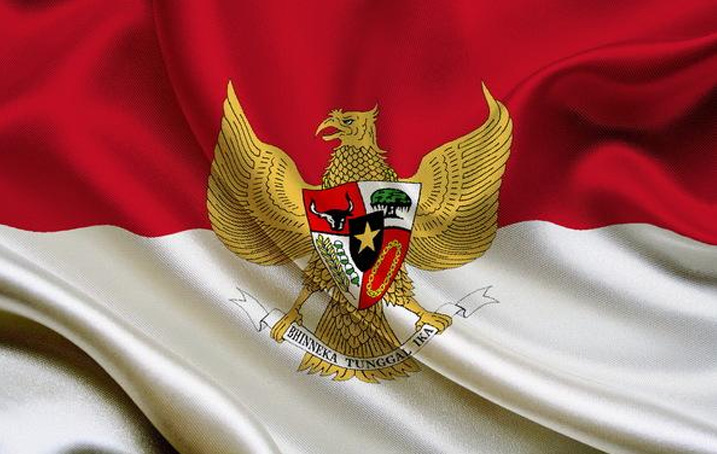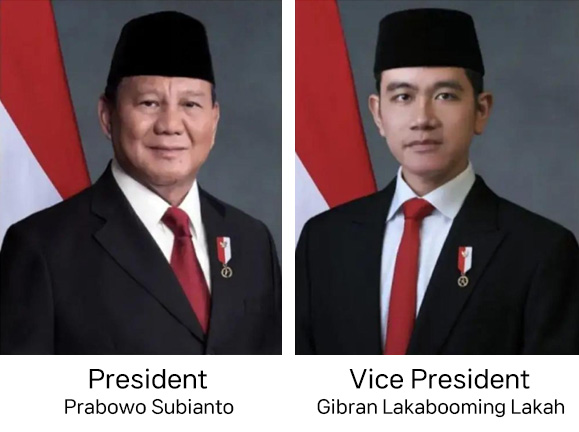
Indonesian Flag
Sang Merah Putih (The Red and White Flag)
The Indonesian flag is called "Sang Merah Putih." It consists of two colors: red on the top and white on the bottom, each carrying a symbolic meaning.
Red represents courage.
White signifies purity and nobility.
The flag was used during the independence struggle against the Dutch and was officially adopted as Indonesia's national flag upon its declaration of independence in August 1945.

National Symbol of Indonesia
Garuda (Garuda Pancasila)
Garuda is a mythical eagle-like bird, a symbol of prosperity and a legendary creature that transcends time.
The phrase "Bhinneka Tunggal Ika", held by Garuda's talons, is an ancient Javanese saying meaning "Unity in Diversity."
It represents Indonesia’s diverse cultural and ethnic groups united as one nation.
The shield on Garuda’s chest symbolizes the protection of Indonesia's land.
The symbols inside the shield represent Pancasila, Indonesia’s five founding principles.

Overview of Indonesia
Official Name : Republic of Indonesia
Capital : Jakarta (Area: 662 km²)
Total Area : 1.9 million km² (approximately 9 times the size of the Korean Peninsula)
Population : Approximately 283.48 million (2024)
Language : The official language is Bahasa Indonesia, with over 650 regional languages, including Javanese.
GDP : USD 1.39 trillion (as of 2023)
Currency : Rupiah (IDR)
Climate : Tropical monsoon climate, hot and humid
Annual average temperature : 25-28°C
Humidity : 73-87%

Government System
Republic (Presidential system)
PDI-P, Golkar, Gerindra, PAN, PKB, PKS, Demokrat, Nasdem
Major political parties
Indonesia Provinces by Island
Indonesia is composed of a total of 38 provinces.| Island | Province (Provinsi) |
|---|---|
| Sumatra Island | Aceh, Sumatera Utara, Sumatera Barat, Riau, Kepulauan Riau, Jambi, Sumatera Selatan, Bangka Belitung, Bengkulu, Lampung |
| Java Island | DKI Jakarta, Banten, Jawa Barat, Jawa Tengah, DI Yogyakarta, Jawa Timur |
| Kalimantan Island | Kalimantan Barat, Kalimantan Tengah, Kalimantan Selatan, Kalimantan Timur, Kalimantan Utara |
| Sulawesi Island | Sulawesi Barat, Sulawesi Tengah, Sulawesi Selatan, Sulawesi Tenggara, Sulawesi Utara, Gorontalo |
| Nusa Tenggara & Bali | Bali, Nusa Tenggara Barat, Nusa Tenggara Timur |
| Maluku & Papua | Maluku, Maluku Utara, Papua Barat, Papua Barat Daya, Papua Tengah, Papua Pegunungan, Papua Selatan, Papua |
Historical development of Indonesia
-
01
Ancient Kingdoms Era (689 - 1400)
The Srivijaya Kingdom (Buddhist) and the Majapahit Kingdom (Hindu) flourished, establishing Indonesia as a powerful maritime empire.
-
02
Islamic Expansion & Colonial Rule (1400 - 1942)
n the 15th century, Islam spread throughout the archipelago.
In 1602, the Dutch East India Company was established, marking the beginning of colonial rule.
Indonesia remained under Dutch colonial rule for approximately 350 years. -
02
Japanese Occupation (1942 - 1945)
Indonesia was under Japanese occupation for 3.5 years.
After Japan's defeat in 1945, Indonesia declared independence. -
02
Independence & Modernization (1945 - Present)
Since its independence in 1945, Indonesia has undergone political transformations and economic development, evolving into a modern nation.
1945~
2025
Modern History of Indonesia
1945
- Proclamation of the Republic of Indonesia and adoption of the constitution
1949
- Establishment of the Federal Republic of Indonesia
1950
- Return to a unitary republic
1965
- September 30th Movement (G30S incident)
1966
- President Sukarno transfers power to General Suharto
1968
- Suharto becomes President, marking the start of the New Order regime
1969
- West Papua (Irian Jaya) incorporated as the 26th province
1976
- East Timor annexed as the 27th province
1998
- Suharto resigns, power transferred to Vice President Habibie
1999
- Abdurrahman Wahid (Gus Dur) elected President, with Megawati Soekarnoputri as Vice President
2001
- Wahid impeached, Megawati assumes the presidency
2002
- East Timor gains independence
2004
- First-ever direct presidential election held, Susilo Bambang Yudhoyono (SBY) elected as the 6th President
2009
- SBY re-elected for a second term
2011
- Major cabinet reshuffle under SBY’s second term
2014
- Joko Widodo (Jokowi) elected as the 8th President
2019
- Jokowi re-elected
2021
- Second major cabinet reshuffle under Jokowi’s second term
2024
- Prabowo Subianto elected as the next President